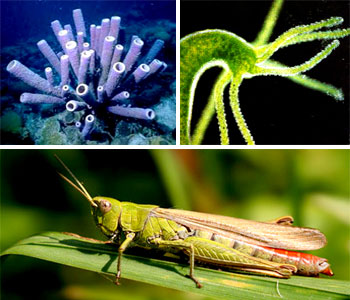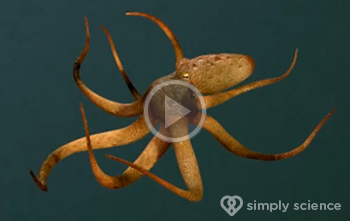 Diversity of life processes
Sponges and hydra are primitive animals that have no circulatory systems. Grasshopper, an arthropod has an open circulatory system.
Diversity of life processes
Sponges and hydra are primitive animals that have no circulatory systems. Grasshopper, an arthropod has an open circulatory system.
 Click to watch video lesson
Click to watch video lesson
There are different life processes that are common to living things. These processes are circulation, movement, respiration, sensitivity, growth, reproduction, excretion and nutrition. Let's explore the life processes of animals in detail.
The circulatory system is a network that carries blood throughout the body. All animals except the simplest kinds have some type of circulatory system. Primitive animals like the sponge and the hydra have no circulatory systems. All their cells are in direct contact with the environment, and such a system is unnecessary. The earthworm has a closed circulatory system where blood is pumped by the heart through arteries, veins, and capillaries. Oxygen is carried by hemoglobin that is dissolved in the blood.
The grasshopper, as a representative animal of the arthropods, has an open circulatory system. After blood is pumped by the heart into an artery, it leaves the vessel and seeps through spaces called sinuses or hemocoels as it feeds body cells. The blood then moves back into a vein and circulates back to the heart. This system lacks capillaries.
Arthropod blood is clear and does not carry oxygen. The human circulatory system supplies the cells of the body with the food and oxygen needed to survive. At the same time, it carries carbon dioxide and other wastes away from the cells. The circulatory system also helps regulate body temperature and carries substances that protect the body from disease. In addition, the system transports chemical substances called hormones, which help regulate the activities of various parts of the body. There are about 100 trillion cells in the human body. For each of these cells to survive and perform its function, each cell needs to receive nutrition, replenish oxygen and remove waste. The circulatory system performs these functions for the cells.